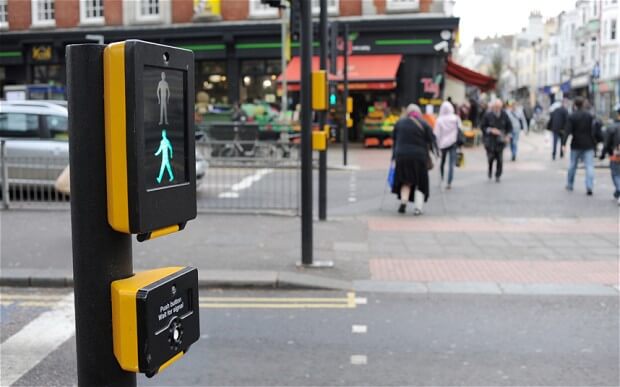One of the big challenges we have with managing the road network in Lincolnshire is acting as arbitrators between the competing road users. Depending on your chosen method of transportation, be it foot, engine or hoof-powered, your desires for the rules and regulations varies considerably. In particular, the conflict is most obvious where modes of transport cross, many areas of the county, such as Spalding and Boston, are besieged with rail level crossings that are more often closed than open. This means that some of our High Street’s grind to a halt for over thirty minutes in the hour as barriers and flashing lights prevent pedestrians and vehicles getting across.
However arguments with Network Rail over level crossings pail into insignificance when compared with the complex issue of pedestrian crossings. The original ‘Zebra’ came into existence when the then British Prime Minister, James Callaghan, saw some designs being tested in 1948 and remarked that the configuration of alternating stripes on the road, to define the priority to those on foot, looked like the famous striped animal. This solution was born out of increasing numbers of deaths on our roads as pedestrians took their lives into their hands trying to get across our frequently busy roads.
Sadly while successful to a point the traditional Zebra crossing has failed to prevent a great many deaths as drivers too often ignored the beacons and lines. The 1970’s saw a move to the more formal Pelican crossings with fixed traffic lights and audio signals. Although initially trialled in 1962 they failed to convince the public, one lady told the BBC at the time that “That man Marples is up to too many tricks. It’s a hairbrained scheme and most dangerous.” (Earnest Marples MP was Transport Minister at the time). These have now morphed into Puffin crossings that incorporate sensors to detect pedestrians in the road and keep the traffic lights red while people are crossing.
Last month’s full meeting of Lincolnshire County Council included some petitions from communities across the county each asking for a crossing to be installed in their area. Local to us there was an extremely well-supported bid from residents and businesses in Long Bennington asking for a safe crossing over the old A1 outside the primary school. While seemingly a straightforward request readers may well recall the St Anne’s Crossing debacle that saw a much needed, approved and funded upgrade being delayed for years due to political maneuvering and nimbyism. Last week I met with parents and councillors onsite in Long Bennington to look at the issue first hand and discuss options. The first stage of this type of application is an assessment. While you could argue that crossings should be installed everywhere they are needed, at a cost of more than £30,000 we have to balance needs. To establish this ‘need’ we look at some factors including pedestrian traffic, vehicular movements and accident history to help measure against a formal criteria what the best solution for any given location is. Cost aside crossings every few yards on a stretch of road or in areas where seldom people cross would infuriate drivers and, like inconsiderate speed limits, undermine their value.
Currently, this assessment suggests the Long Bennington location doesn’t qualify for a pedestrian crossing. While disappointing there are still opportunities to address the very valid concern the residents have. Lincolnshire Road Safety Partnership operates an excellent School Crossing Patrol Service, which provides trained personnel (lollipop ladies in old money) to assist people in crossing roads outside schools. However vacancies for school crossing patrollers are notoriously difficult to fill as the work tends to suit someone who’s local, lives in walking distance of the area, is willing to do it and the job fits in with their lifestyle. There is potential, as well as a physical engineering solution, to the issue in Long Bennington. By some more intelligent working arrangements with the school, and perhaps local businesses, we could find a way of bringing back the Lollipop lady/man to provide real safety for children to and from school.






0 Comments